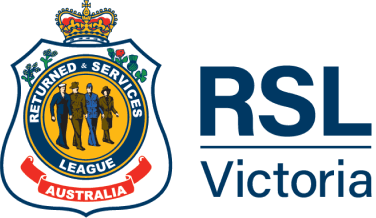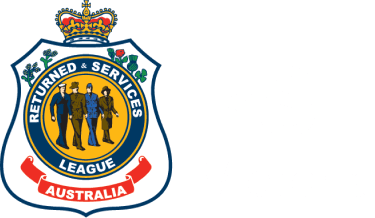Photos supplied by Dr Kirsty Harris
Dr Kirsty Harris has spent decades uncovering and recording the efforts of Australian women in war. The former Army officer’s storied work, including a bookand more than 20 scholarly articles, has given voice to those women whose efforts would have otherwise been lost through time.
However, she could never have imagined that when she left Melbourne for the quiet, north-eastern neighbourhood of Violet Town, she’d find herself involved in – quite literally – her biggest history project yet. Perfectly framed under a shady canopy of lush green Manchurian pears in the heart of Violet Town is an impressive new mural. It recognises Australian women’s tremendous contributions to the nation’s war effort, and Kirsty has proudly played a role in its creation.
Five years in the making and spanning 17 metres in length and almost 2 metres in height, the vast black and white mural gives long overdue recognition to our women who served.
“The mural really is something special. It features seven separate storyboards telling the story of Australian women in war. It symbolically captures the national effort of women across every conflict and the variety of roles they played, and [features] an honour board that specifically recognises the efforts of local women,” Kirsty said.
"It’s wonderful to see this come to life, because it’s been such a labour of love for many RSL people. I hope it becomes a conversation starter about the role Australian women played in war and I hope it makes people think about those who served from their own areas and about ways they can be honoured and recognised."
Dr Kirsty Harris
Long-overdue recognition
It wasn’t long after Dr Harris arrived in Violet Town that local RSL member Jenni Kennedy came knocking on her door. Jenni’s cousin Beryl Ramage had been a member of the Women’s Auxiliary Australian Air Force in World War II, and Jenni felt that better recognition for the local women who served was long overdue.
Like many towns across Australia, some nurses were acknowledged in the First World War Avenue of Honour, but many local women on the honour boards were listed with just an initial and not their full name, making it difficult to distinguish if they were male or female.
Seizing an opportunity, Jenni swiftly enlisted Kirsty’s expert help to identify all the local women who served and find a way to recognise them properly.
“I put together a list of names and we took it to the RSL,” Kirsty said
“They had funding for another artwork but that didn’t eventuate, so there was an opportunity to bring Jenni’s vision to life. A project team was formed and they initially thought about an honour board for the women and some small murals, but the idea kept expanding and a clever person suggested one big mural.
“We had a long brick wall that ran along the RSL Sub-Branch's fence line that wasn’t particularly attractive, so it seemed like the perfect space.”
After carefully choosing images to replicate, the project team commissioned acclaimed Benalla artist Tim Bowtell to create the image. Tim is known for his silo art that has created a popular tourist trail through the north east of Victoria.
The striking black and white mural features four local women who served, but also some more familiar faces such as nurse Vivian Bullwinkel. It shows the various roles women undertook, such as in factories, on stage, the nurses and peacekeepers throughout each theatre of war, along with contemporary serving women.
"It’s a representation of how women have served in the forces over generations – we are honouring local women but putting their service in a national context."
Dr Kirsty Harris
“It also recognises women who may not have served with the Australian Army but served with the allies.
For example, we had women war journalists and photographers. Women served across quite a wide range of roles.”
Kirsty’s research identified around 20 local women who served in the Australian Army, Navy, and Air Force or on the home front during World War I and World
War II. Additional women were discovered through local families. For example, Sister Frances Mackay from Violet Town served in World War I in the Australian Army Nursing Service and she appears on the mural.
Three other women have been chosen to represent the women’s local efforts in World War II.
Alicia Lindrum (nee Hoskin) served as a driver to US General Douglas MacArthur in Melbourne in 1942, Sister Beryl Swallow nursed in the Royal Australian Naval Nursing Service and was an acting superintending sister at HMAS Cerberus in Victoria, and Jenni Kennedy’s cousin, Aircraftwoman Beryl Ramage, served with the Women’s Australian Auxiliary Air Force.
“I always felt that we should recognise the women of the district as well as the men, and this mural does them all justice,” Jenni said.
Family legacy
Kirsty Harris joined the Army in 1978, working in the Signal Corps. She had never planned on becoming a military historian, but a keen interest in her own family history took her down that path. Her family’s military service dates to the British Army in India, and her grandfather and three of his brothers served with the Australian Lighthorse Regiment in World War I.
When she graduated as an Army officer in 1982, Kirsty proudly turned to her father and said, “This is wonderful, I’m the first female officer in the family”, but he promptly set her straight.
“He said, ‘No you’re not, your grandmother served in World War I!’”
Kirsty said, “I knew all about my grandfather’s service but nothing about my grandmother’s.”
She set out to find out all that she could about her grandmother Bessie Proudfoot, who was a nurse with the Australian Army Nursing Service, and she wrote a small report of the family’s history to share with relatives.
“But one PhD, 20 academic articles, a website and a book later, here I am,” she said, today one of Australia’s leading Australian women-in-war historians. “It wasn’t the path I imagined, but I have a passion for learning about the work women did in service.”
She hopes that the mural, which was a true community project supported by the members of the RSL past and present, the local Men’s Shed, the football club, the Violet Town History Group, State Government, the local Shire, Lions Club and op shop and many others, will be a talking point and a place for people to reflect on the role women have played during wartime and recognise their efforts.
“It’s been wonderful bringing this project to life, and I hope it prompts conversations and makes others think about those who served in their own areas and how they can be honoured,” she said, noting that Myrtleford has recently unveiled a bronze bust and plaque recognising the efforts of local Elizabeth Rothery, a nurse with the Australian Army Nursing Service during World War I.
"Since 2016, women have been able to join the Defence forces in any combat role, which is significant, but it’s important to recognise that women have served in war through every conflict going back. It is an appropriate time to recognise the length and breadth of their experience and to be loud and proud about them and to acknowledge the pivotal role they played."
Dr Kirsty Harris

